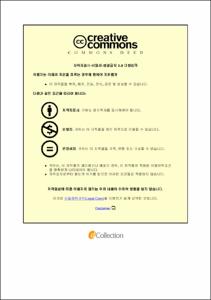1-Butene의 폭발한계 측정과 폭발압력의 거동에 의한 위험성 평가
- Alternative Title
- Risk Assessment by Behavior of Explosion Pressure and Measurement of Explosion Limit of 1-Butene
- Abstract
- In order to consider the risk of explosion and ignition of 1-butene, the following conclusions were obtained as a result of the experiment by changing the oxygen concentration and water vapor concentration.
1) As a result of a temperature of 350 °C and a pressure of 1.0 bar, the concentration of the lower limit of 1-butene and the concentration of the upper limit of 10.2% were calculated at an oxygen concentration of 21%.
2) At the oxygen concentration of 15.3%, minor explosions occurred at the sample concentration of 3.4% and 3.5%, and the marginal oxygen concentration was calculated at the oxygen concentration of 15.2%.
3) The explosion limit was measured by increasing the concentration change of moisture at the oxygen concentration of 15% by 2.5% to change the concentration of 1-butene under water vapor of up to 10%, but no explosion occurred.
4) At the oxygen concentration of 16%, the lower limit of 2.8% was calculated only when water vapor was not injected, but no explosion occurred when water vapor was injected more than 2.5%.
5) When the oxygen concentration was 17%, the change in moisture concentration was increased by 2.5%, and as a result of changing the concentration of 1-butene under water vapor of up to 10%, it was confirmed that the lower limit was about 0.2% lower than when the oxygen concentration was 16%.
6) At the oxygen concentration of 18%, the lower limit of 2.5% was obtained when water vapor was not injected, and as a result of injecting 2.5% of water vapor, the lower limit of 3.7%.
7) When the oxygen concentration was 21%, the lower limit was 2.3%, when the water vapor was not injected, the lower limit was 3.3%, when the water vapor was injected 5%, the lower limit was 4.9%, and when the water vapor was injected 7.5%, the lower limit was slightly lowered.
8) As a result of measuring the maximum explosion pressure of the sample, almost the same pressure was exhibited at the oxygen concentration of 16 to 21%.
9) The maximum explosive pressure increase rate of specimen was calculated to be 43.96 kg/cm2/s, 48.84 kg/cm2/s, 53.72 kg/cm2/s, and 63.49 kg/cm2/s, respectively, at the oxygen concentration of 16 to 21%.
- Issued Date
- 2022
- Awarded Date
- 2022. 2
- Type
- Dissertation
- Publisher
- 부경대학교
- Alternative Author(s)
- Chang-Woo Park
- Affiliation
- 부경대학교 산업대학원
- Department
- 산업대학원 소방공학과
- Advisor
- 최재욱
- Table Of Contents
- 1. 서 론 1
2. 이론적 배경 4
2-1. 기체 혼합물의 상태 방정식 4
3. 실험장치 및 방법 8
3-1. 실험시료 8
3-2. 실험장치 9
3-2-1. 폭발한계 및 폭발압력 9
3-2-2. 에너지 공급 장치 13
3-3. 실험방법 14
3-3-1. 폭발한계 측정 14
3-3-2. 폭발압력 및 폭발압력 상승속도 측정 16
4. 결과 및 고찰 17
4-1. 1-butene의 폭발한계 측정 17
4-2. 1-butene의 수분농도 변화에 따른 폭발한계 측정 20
4-3. 산소농도 변화에 따른 폭발압력 측정 29
4-4. 산소농도 변화에 따른 폭발압력상승속도 측정 35
5. 1-butene의 폭발가능성 검토 및 의견 40
6. 결 론 43
Nomenclature & Greek Letters 45
참고 문헌 46
Abstract 48
- Degree
- Master
- Files in This Item:
-
-
Download
 1-Butene의 폭발한계 측정과 폭발압력의 거동에 의한 위험성 평가.pdf
기타 데이터 / 928.91 kB / Adobe PDF
1-Butene의 폭발한계 측정과 폭발압력의 거동에 의한 위험성 평가.pdf
기타 데이터 / 928.91 kB / Adobe PDF
-
Items in Repository are protected by copyright, with all rights reserved, unless otherwise indicated.